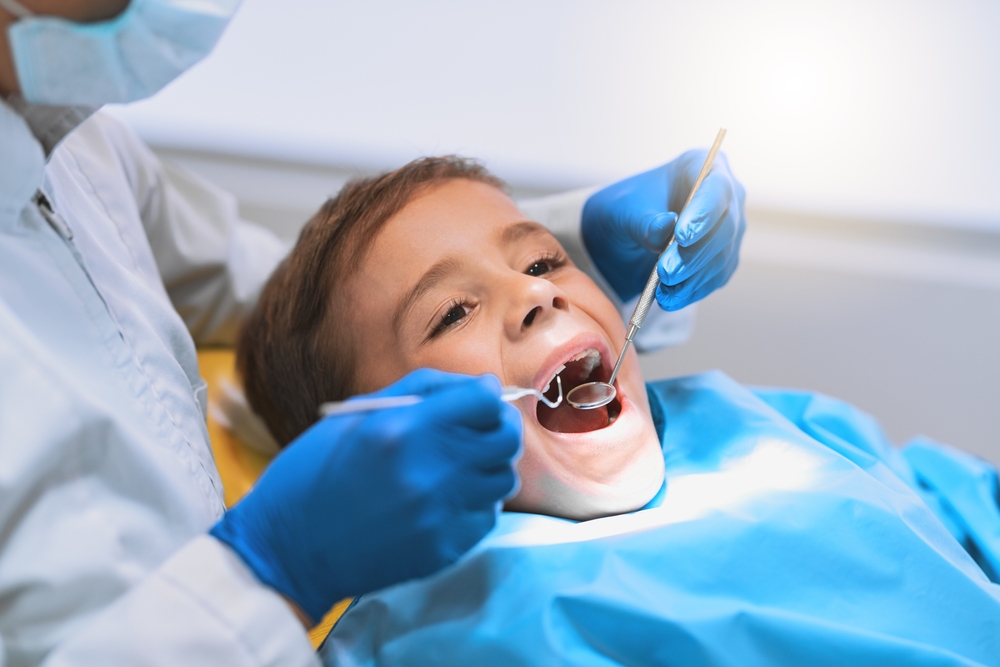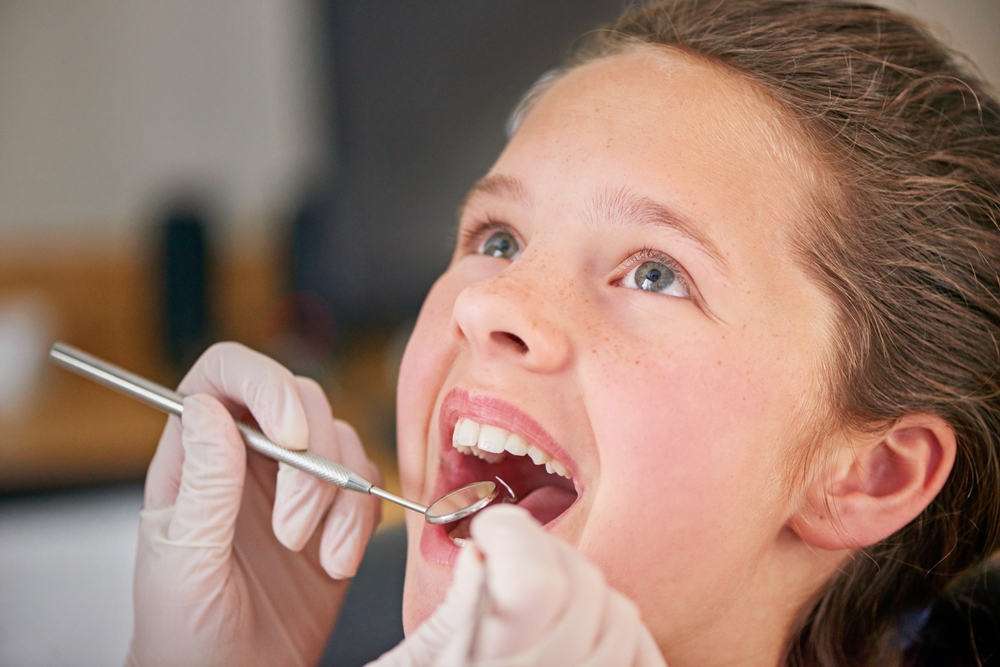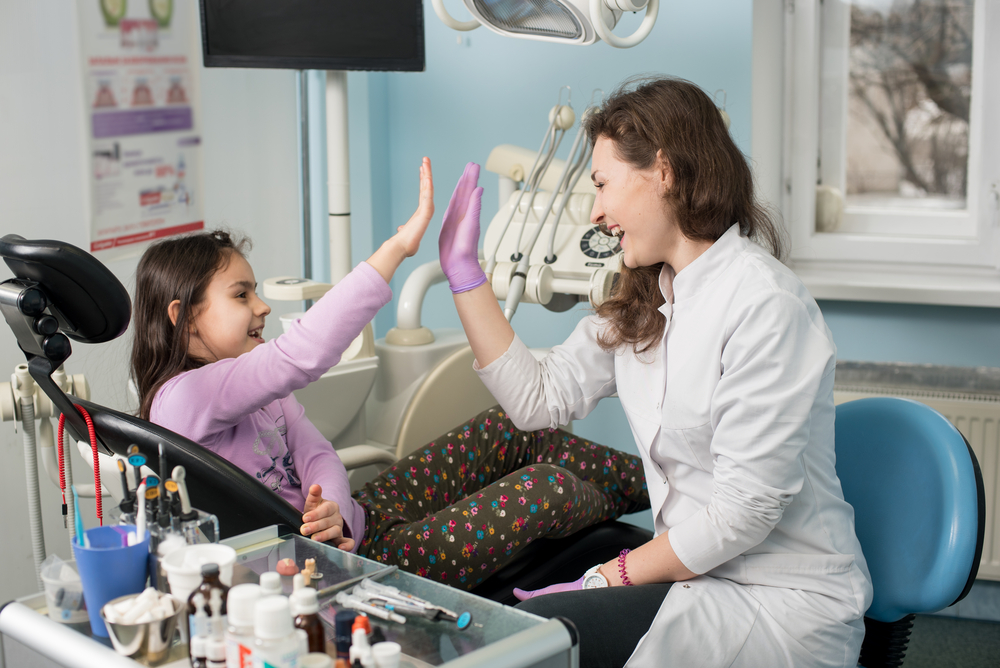Dental cleanings are essential for maintaining good oral hygiene for both adults and children. Regular visits to the dentist can help prevent many of the most common oral health issues, including cavities and gum disease, from occurring at any age.
While the basic principles behind adult and pediatric dental cleanings are basically the same, there are several key differences in how dental cleanings are performed on children versus adults. These differences reflect the specific dental needs and comfort levels of each age group.
Keep reading to get a better understanding of the purposes, techniques, concerns, and other factors that differentiate adult and pediatric dental cleanings!

The purpose of dental cleanings for both adults and children is the removal of plaque and tartar from the teeth and around the gums, especially in hard-to-reach places. While most plaque is removed when teeth are brushed at home, when it builds up, it hardens into tartar, which can only be removed with a professional cleaning.
Other purposes for dental cleaning differ between adults and children. Pediatric dental cleanings focus more on oral development and prevention of children’s common dental issues, while adult cleanings are often more focused on maintaining gum health, assessing existing dental problems, and monitoring previous dental restorations, including fillings and crowns.
Dental cleanings for adults typically involve a series of steps, including an initial examination, removal of plaque and tartar, polishing, and X-rays, if required. A dentist may recommend a fluoride treatment for adults who are prone to cavities or have gum disease, but not all adults typically have one as part of a cleaning.
Pediatric dental cleanings follow similar steps, but these steps can be adjusted to accommodate a child’s age, comfort or anxiety level, and specific developmental stage. Hygienists often use smaller, more gentle tools during a pediatric cleaning, and the paste used to polish teeth usually has kid-friendly flavors, like grape or bubble gum.
Fluoride treatments are recommended for most children at the end of a dental cleaning. Children are especially prone to tooth decay, and adding fluoride to their teeth helps strengthen tooth enamel and prevent unwanted cavities.
Because children can be anxious about a trip to the dentist, pediatric dental cleanings aim to be kid-friendly and are performed by pediatric dentists and hygienists who are specially trained to work with children.
Often, a pediatric cleaning is broken into smaller, more manageable steps to accommodate shorter attention spans. Extra time may be allowed for children to ask questions and for dentists and hygienists to explain each step.

Adult dental cleanings are often more focused on the long-term maintenance of oral health. Adults are more likely to have existing dental work, including crowns, dental bridges, and implants, that cleanings focus on to ensure these restorations remain functional and intact.
As teeth age, they are more likely to develop cavities, crack, become misaligned, and develop gum disease. Adults may require more frequent cleanings or more intensive care during a cleaning.
Pediatric cleanings address concerns specific to younger patients. A pediatric dentist examines children’s mouths to check that baby teeth are coming in correctly and that there are no alignment issues that could cause problems with the appearance of their permanent teeth.
Children’s cleanings are also focused on the biggest threat to children’s oral health: tooth decay. Children can develop cavities due to diet and poor brushing techniques, so pediatric dentists often discuss proper oral hygiene and cavity prevention with children and their parents at cleanings.

Most dentists recommend that adults and children with healthy teeth have a professional dental cleaning every six months. If an adult or child has a specific dental issue, more frequent cleanings may be required.
Adults are more prone to developing gum disease, which occurs when plaque and tartar build up beneath the gum line, causing infection and inflammation that can lead to misalignment and tooth loss if not treated.
Often, adults with gum disease are advised to have 3-4 dental cleanings per year. These extra cleanings ensure that gum disease doesn’t worsen and compromise overall oral health.
Children should come in for their first cleaning when their first tooth erupts or by their first birthday. Starting visits to the dentist’s office early can help children feel at ease when coming in for routine care and establish good oral health care habits that can last a lifetime.
As long as children’s teeth are healthy, they usually need pediatric cleanings twice a year. If a child is at a higher risk for developing cavities, has oral development issues, or other oral health issues, their pediatric dentist may recommend more frequent cleanings.
Although the fundamental goal of dental cleanings is the same for both adults and children, the focus, approach and techniques, and specific concerns of cleanings are unique to each age group. While children can have a dental cleaning at the same dentist’s office as an adult, choosing a pediatric dentist for their oral health care, including cleanings, can ensure that their specific needs are fully met and their developing teeth are given the best possible care!
Is it time for you or your child to have a dental cleaning? Schedule an appointment at Premier Pediatric Dentistry in Miami, FL, today!





